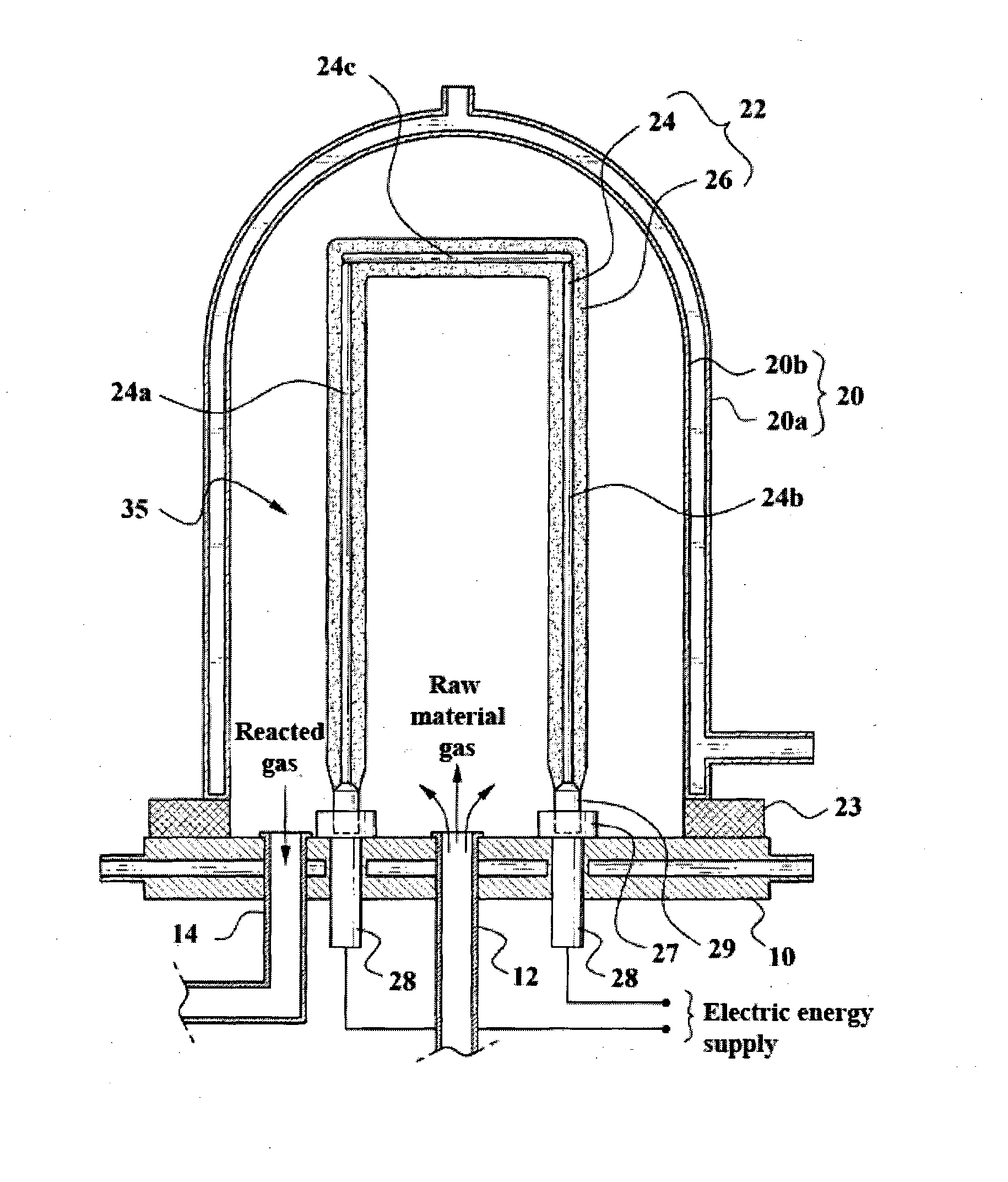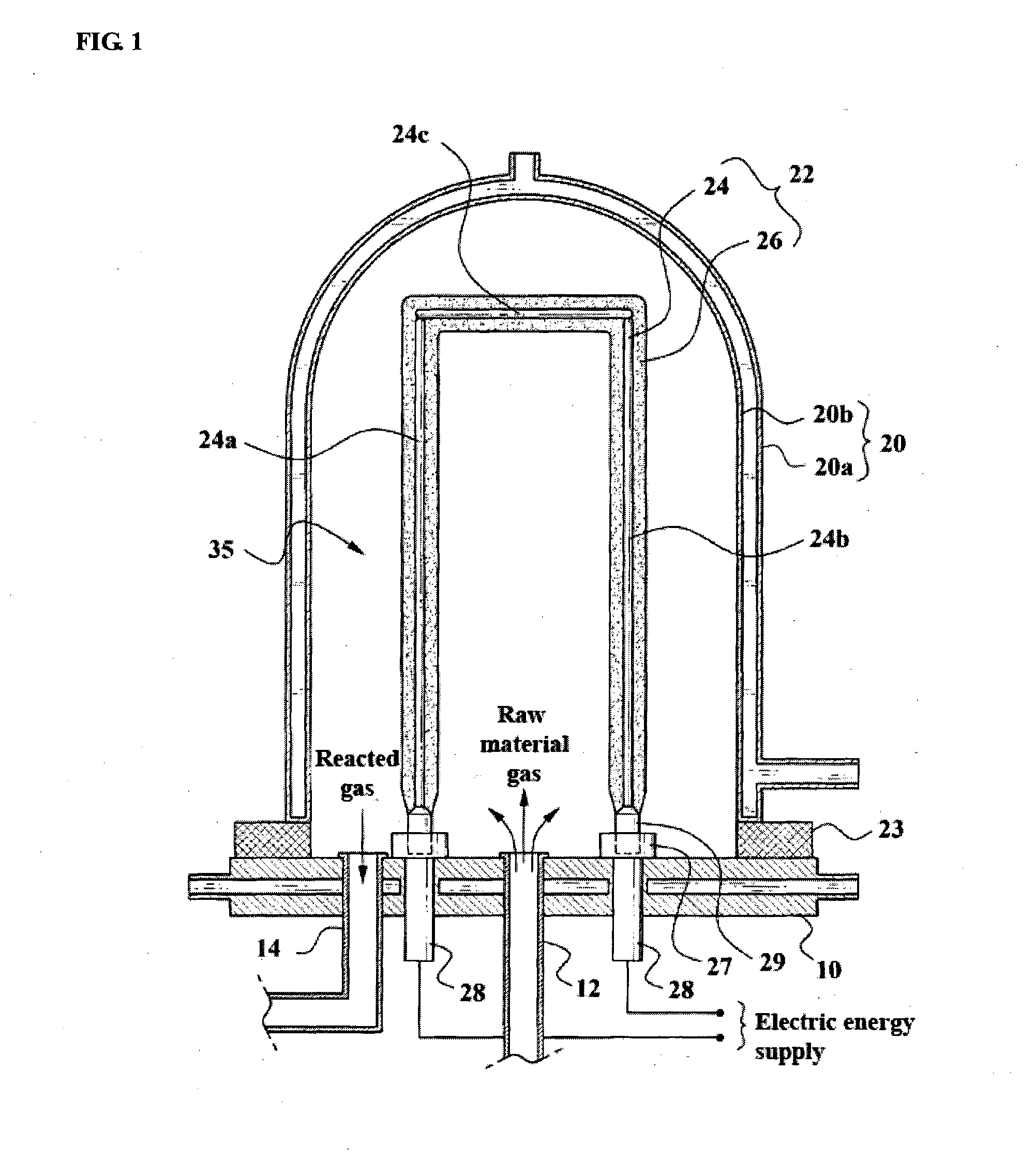Method for manufacturing polysilicon
a manufacturing method and polysilicon technology, applied in the direction of crystal growth process, polycrystalline material growth, silicon compounds, etc., can solve the problems of excessive supply of raw material gas, reduced ratio of raw material gas contributing to deposition reaction, and increased deposition amount, so as to prevent meltdown, reduce the effect of energy consumption and reduce the effect of consumption
- Summary
- Abstract
- Description
- Claims
- Application Information
AI Technical Summary
Benefits of technology
Problems solved by technology
Method used
Image
Examples
example 1
[0083]Polysilicon was produced using a reactor having a structure as shown in FIG. 1.
[0084]In this regard, the number of silicon rods (initial diameter of approximately 7 mm) installed inside the reactor was total 54, and the pressure inside the reactor was adjusted to approximately 6 bar absolute.
[0085]Dichlorosilane (DCS) and trichlorosilane (TCS) were contained in a raw material gas, and hydrogen gas (H2) was mixed with the raw material gas at a molar ratio of hydrogen gas (H2) to the raw material gas of approximately 1:8. The raw material gas was pre-heated to approximately 175° C., and a supply amount of the raw material gas per square millimeter of the surface of the silicon rod was approximately 2.0×10−7 (mol / sec / mm2).
[0086]The current value was set to maintain the average surface temperature of the silicon rod at approximately 1150° C. When the diameter of the silicon rod became approximately 150 mm, it was determined that the process was progressed to 100%, and the energy c...
example 2
[0090]Polysilicon was manufactured according to the reaction progress in the same manner and under the same conditions as in Example 1, except that until the process reached approximately 50%, the molar ratio of DCS to TCS contained in the raw material gas was adjusted to approximately 50 mol %, and then until the reaction was completed, the molar ratio of DCS to TCS contained in the raw material gas was adjusted to approximately 5 mol %.
example 3
[0091]Polysilicon was manufactured according to the reaction progress in the same manner and under the same conditions as in Example 1, except that until the process reached approximately 40%, the molar ratio of DCS to TCS contained in the raw material gas was adjusted to approximately 65 mol %, and then until the reaction was completed, the molar ratio of DCS to TCS contained in the raw material gas was adjusted to approximately 5 mol %.
PUM
| Property | Measurement | Unit |
|---|---|---|
| surface temperature | aaaaa | aaaaa |
| diameter | aaaaa | aaaaa |
| diameter | aaaaa | aaaaa |
Abstract
Description
Claims
Application Information
 Login to View More
Login to View More - R&D
- Intellectual Property
- Life Sciences
- Materials
- Tech Scout
- Unparalleled Data Quality
- Higher Quality Content
- 60% Fewer Hallucinations
Browse by: Latest US Patents, China's latest patents, Technical Efficacy Thesaurus, Application Domain, Technology Topic, Popular Technical Reports.
© 2025 PatSnap. All rights reserved.Legal|Privacy policy|Modern Slavery Act Transparency Statement|Sitemap|About US| Contact US: help@patsnap.com


